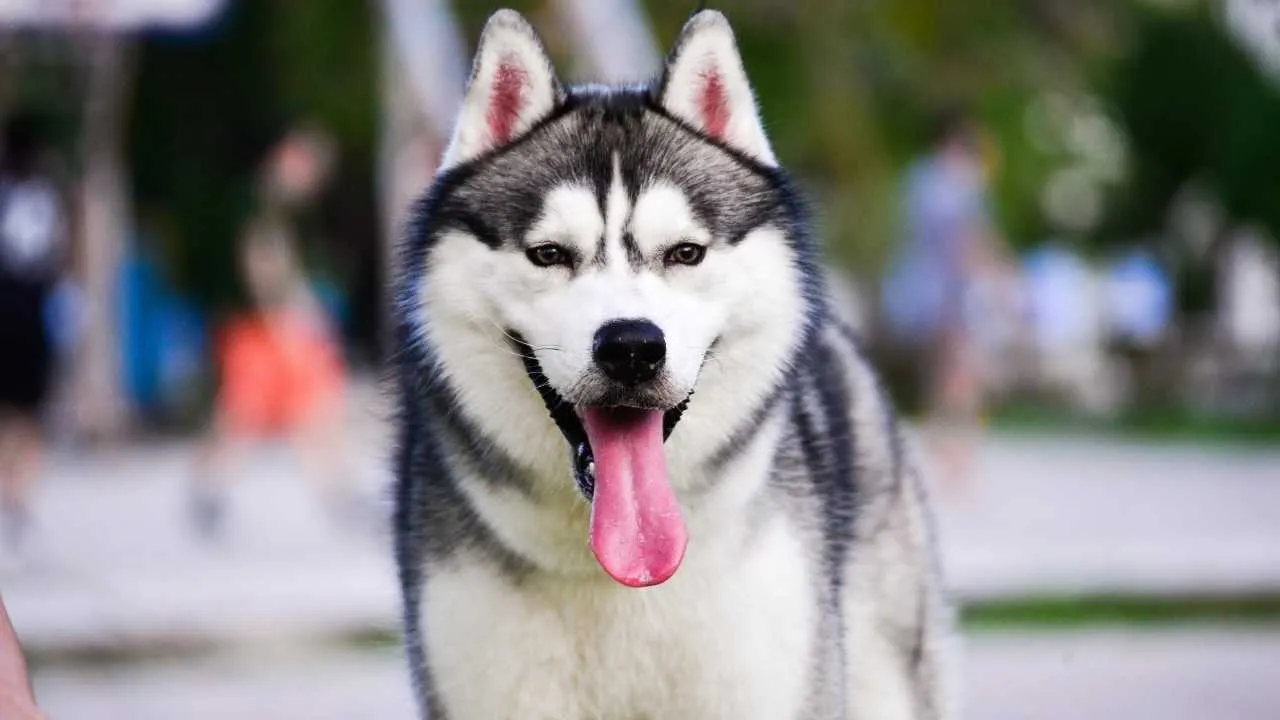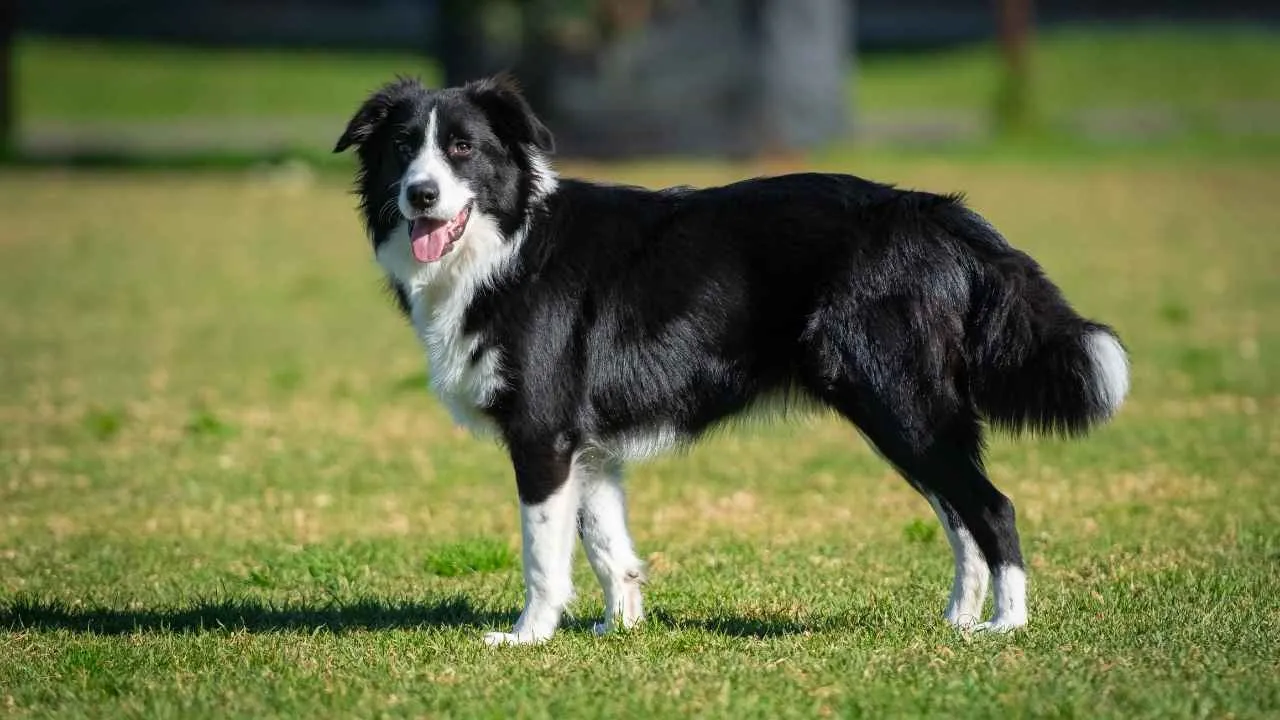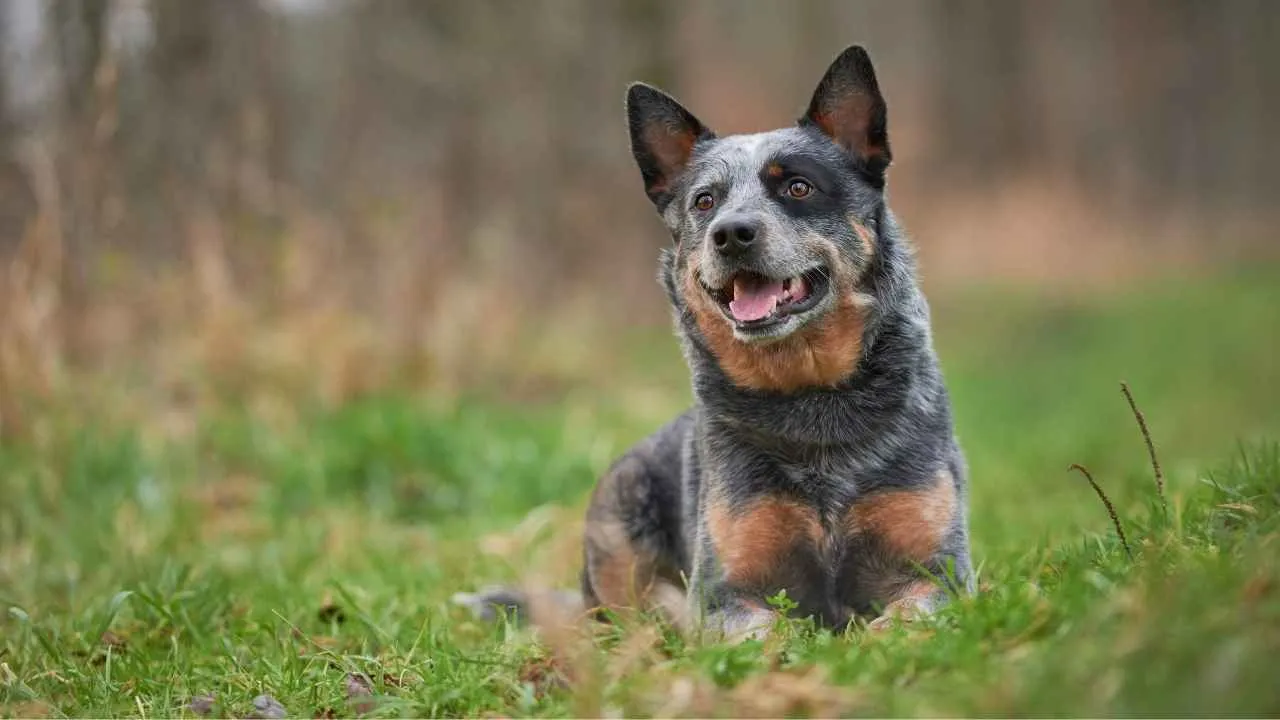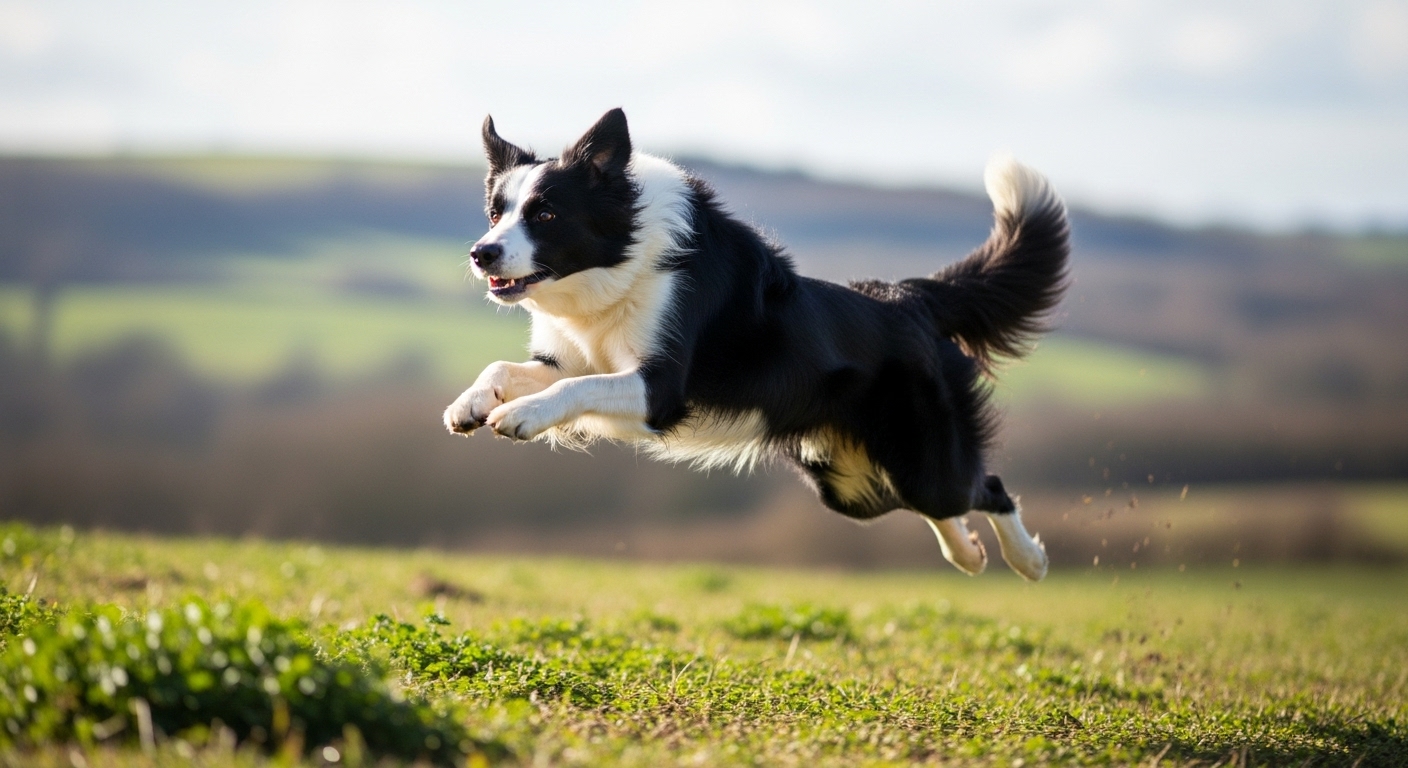Have you ever watched your dog suddenly freeze, eyes locked on a squirrel, before taking off in a full sprint?
It’s in that moment you see pure instinct come alive — the thrill of the chase written all over their face. That powerful energy isn’t mischief; it’s the dog’s prey drive, a deep-rooted instinct that once helped their ancestors survive.
While prey drive exists in all dogs, some dogs have it stronger than others. This protective instinct is what makes certain breeds love chasing fast-moving animals, from rabbits to birds darting across a field.
It’s part of what defines many hunting dogs and working dogs that were bred for generations to track, herd, or capture small animals.
Of course, a high prey drive doesn’t make these dogs wild — it makes them passionate. With early socialisation, structured training, and plenty of mental stimulation, even dogs with high prey drive can learn to channel that energy safely.
Whether it’s through flirt poles, chase games, or long walks, these dogs find joy in the movement itself.
So, if you’ve ever wondered which dog breeds with high prey drive that love the chase truly embody that unstoppable spirit, let’s explore seven that turn every run into a story of instinct, excitement, and heart.
Dog Breeds With High Prey Drive That Love The Chase
1. Greyhound

Ever seen a dog that looks like it’s racing the wind itself?
That’s the Greyhound — a blur of elegance, speed, and focus.
Known for their lightning-fast sprints, these dogs were bred centuries ago to hunt and chase small animals across open fields.
When a rabbit or squirrel dashes by, that ancient instinct takes over. It’s not aggression — it’s the thrill of pursuit, an echo of their history as one of the oldest hunting dogs in the world.
Greyhounds have an incredibly high prey drive and an instinct to chase moving animals, yet they’re surprisingly gentle at home. They’re calm, affectionate, and often love curling up with their family after a short burst of exercise.
Many owners are amazed by how quiet and laid-back they can be indoors. Their strong protective instinct, however, means they should be supervised around other small animals, especially if those pets like to run or flutter.
With early training and consistent socialization, these high prey drive dogs learn to balance their chase-loving nature with a calm, loving temperament. According to Wikipedia, Greyhounds are one of the oldest breeds, known for their gentle manners and athletic build that makes them exceptional runners.
Fun Fact
Despite being one of the fastest dog breeds on Earth — capable of reaching speeds up to 45 mph — Greyhounds are affectionately nicknamed “45-mph couch potatoes” because they spend most of their day lounging peacefully, as noted by Purina.
2. Siberian Husky

Ever watched a dog bolt like the wind the moment a rabbit darts away?
That’s exactly what a Siberian Husky can do.
With their eyes gleaming and muscles coiled, they unleash a powerful instinct to chase, drawn from generations of life in harsh Arctic conditions. The dog’s drive to pursue fast-moving small animals is not mischief—it’s part of their very essence.
The Siberian Huskies’ prey drive follows the motor pattern: orient → eye → stalk → chase … which is deeply rooted in their history. These working dogs were bred by the Chukchi people to pull heavy loads and traverse frozen landscapes.
Along the way, they developed a natural urge to move, explore, and chase after their prey. In a modern home, this means they may zero in on a cat sneaking across the floor, or a squirrel flitting by the window.
Because of this, early socialization with other pets and consistent training are key. A dog’s prey drive, when unmanaged, can lead to frustration or destructive behavior—especially if the Husky doesn’t have an outlet for its energy.
Fun Fact
Some Husky rescue groups say these dogs can slip under fences, climb gates, or simply vanish off-leash if they spot a “potential prey” like a bird or rabbit in motion.
3. Jack Russell Terrier

Ever tried convincing a Jack Russell not to chase something that moves?
Good luck!
These little dynamos are bursting with energy, curiosity, and confidence. Originally bred in England for fox hunting, they were designed to track, dig, and chase small prey with fearless determination. That fiery spirit is still alive in them today.
Their high prey drive means they’ll notice every rustling leaf or twitching tail — and once the chase begins, there’s no stopping their enthusiasm. Despite their small size, Jack Russells have the heart of much larger dogs.
They’re incredibly intelligent and need plenty of mental stimulation to stay balanced and happy. Without training and structure, they can become restless or even show destructive behavior. Due to their powerful instinct to chase small pets, close supervision is essential in multi-animal households.
Yet, around older children and adults who understand their playful nature, they make affectionate and entertaining companions. Jack Russells are lively, clever, and full of confidence — a perfect mix of fun and mischief for active families.
Fun Fact
The Jack Russell’s jumping ability is legendary — many can leap five feet straight into the air when excited.
4. Border Collie

Ever seen a dog so focused it seems to read your mind?
That’s the Border Collie — a lightning-fast thinker that turns the art of chasing into pure brilliance.
Among the smartest dog breeds in the world, the Collie is a true master of herding sheep and cattle. Their intense focus and instinct to chase come from generations of working alongside farmers.
This powerful drive often makes them want to herd kids, cats, or even other dogs when they don’t have livestock around. They are also known as nanny dogs, due to their gentle, big personalities. Due to their high prey drive, owners must provide proper training from an early age.
Without direction, their energy can turn into obsessive behaviors — chasing bikes, cars, or anything that moves. That’s why early training and mental stimulation are essential to channel their prey energy into positive outlets like fun games, toys, or agility courses.
Border Collies are incredibly responsive to commands and thrive in environments where they can learn, run, and think. With the right structure, this breed becomes one of the most loyal and well-behaved companions.
Fun Fact
The American Kennel Club noted that a Border Collie named Chaser learned over 1,000 words, making it one of the most intelligent breeds ever recorded — a true Einstein of the canine world!
5. Beagle

Ever wondered why a Beagle’s nose is always to the ground, tail wagging in full excitement?
That’s not curiosity—it’s instinct calling, a natural-born tracker following the invisible stories carried on the wind.
Gentle in nature yet overflowing with energy, the Beagle is one of those breeds that can turn a simple walk into an adventure. Initially bred for hunting small animals like rabbits, these pups still retain a strong desire to chase.
Their sense of smell is so sharp that even professional handlers often compare them to Bloodhounds. You might see a Beagle react quickly when it spots a squirrel or even a cat darting across the yard—its catching prey drive kicking in before you can say “sit.”
Despite their excitement for the chase, Beagles make affectionate pets who adore their families and love playing with children. They enjoy the company of other animals too, but without proper training, they may attempt to chase instead of play.
Using treats and positive commands helps owners control that instinct and teach the dog to behave calmly during walks. With the right training and consistency, their high prey drive becomes a fun way to channel energy rather than aggression.

Life with a Beagle is busy, loud, and full of joy. They love toys, games, and running around the fence as if they’re guarding their own little property. Whether it’s a ball rolling across the grass or a scent floating from the neighbors’ yard, a Beagle’s desire to explore never stops.
These dogs remind every person watching them that life’s greatest fun often comes from following your instincts—nose first.
Fun Fact
Beagles have an incredible sense of smell—they possess around 220 million scent receptors, compared to a human’s 5 million! That’s why airport security teams around the world often use them to detect contraband and even agricultural items.
6. Australian Cattle Dog

Picture a rugged dog sprinting across open fields, dust swirling around its paws as it herds livestock with laser-sharp focus.
That’s the Australian Cattle Dog—tough, intelligent, and born to chase with a purpose.
Originally bred to control cattle in the vast Australian outback, this breed has unmatched energy and determination. Its instincts run deep—it will chase, nip, and circle anything that moves, whether it’s sheep, small animals, or even a bouncing ball.
These dogs thrive on action and love being part of a busy, outdoor lifestyle where they can use both their body and mind. Their stamina and drive make them one of the hardest-working herding breeds in the world. Their loyalty and alert nature also make them effective guard dogs on farms and ranches.

Their strong prey drive also makes them protective of their property and family. They react quickly to strangers, loud sounds, or movements, which can be mistaken for aggression, but it’s actually their herding instinct at work.
Proper training, daily exercise, and socialization from the puppy stage help them channel that energy positively. Owners who give them structure, toys, and outdoor playtime find that these dogs don’t just protect—they thrive.
Fun Fact
Australian Cattle Dogs are famous for their longevity—many live well into their late teens. One record-holder, Bluey, lived an incredible 29 years and 5 months, making it the oldest dog ever recorded!
7. Weimaraner

Ever met a dog that moves like a shadow through the woods—swift, silent, and unstoppable?
That’s the Weimaraner, often called the “silver ghost” for good reason.
Elegant yet fiercely determined, this breed was developed in Germany for hunters who needed a versatile companion capable of tracking deer, birds, and even wolves. With sleek muscles and boundless stamina, the Weimaraner thrives on the thrill of the chase.
Its strong instinct to pursue prey isn’t just about excitement—it’s deeply rooted in centuries of selective breeding for endurance and focus. Known for their vigilance, Weimaraners can also be great guard dogs for families who value both protection and companionship.
Their natural athleticism makes them excellent partners for outdoor activities like running, hiking, and agility sports.
Though they form deep bonds with their families, their prey drive means they might chase small pets if left unchecked. Consistent training, mental challenges, and supervised play keep their energy directed in positive ways.
Given enough purpose and exercise, this breed becomes not only a loyal pet but also a breathtaking athlete.
Fun Fact
The Weimaraner’s striking silver-gray coat isn’t just unique—it actually helps them blend seamlessly into foggy forests during hunts, giving rise to their ghostly nickname!
Conclusion
Every dog breed on this list carries a spark of nature’s wild spirit — the instinct to chase, run, and pursue.
These dogs aren’t aggressive or difficult; they’re simply driven by a deep-rooted prey instinct that once helped them survive and serve. With patience, proper training, and daily stimulation, that same drive can become a source of joy and purpose rather than chaos.
Whether it’s a Border Collie guiding sheep with grace or a Greyhound racing with pure elegance, each of these breeds tells a story of instinct meeting companionship.
Owning a dog with a high prey drive means learning to guide that energy, not suppress it.
Teach them, play with them, and give them a reason to run — because for these remarkable dogs, the chase isn’t just a game, it’s a way of life. And in every sprint and leap, they remind us how powerful, loyal, and beautifully instinctive the bond between human and dog truly is.


